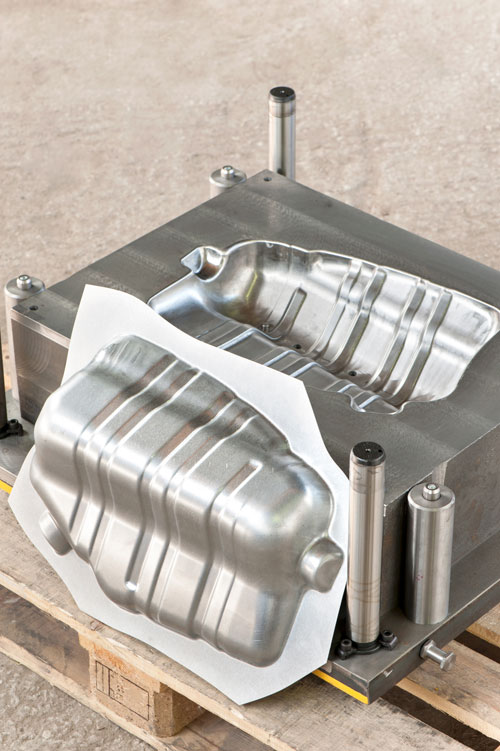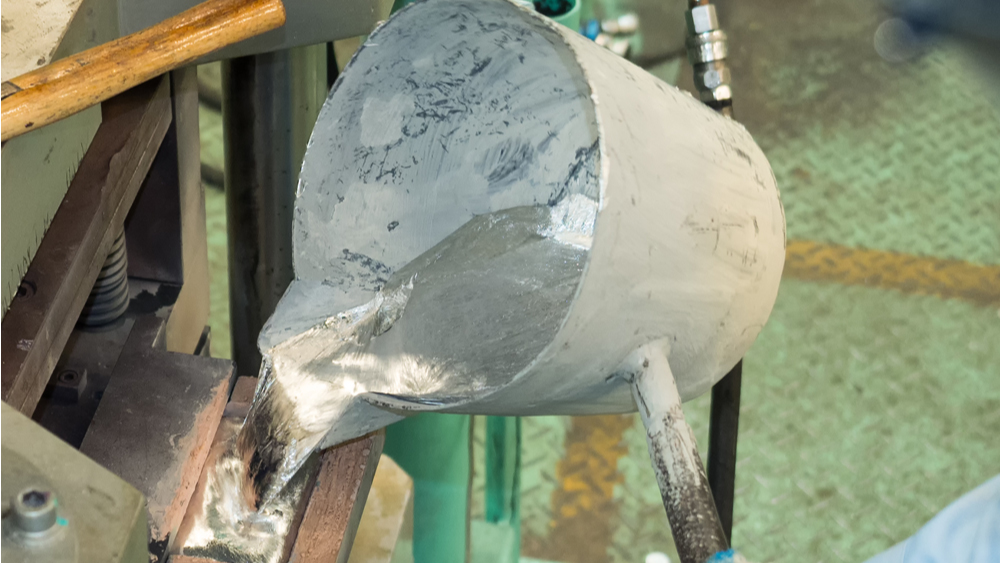How Aluminum Casting compares with other materials in weight
Comprehending the Benefits and Ranges of Aluminum Castings in Sector
Aluminum castings have ended up being significantly vital across various industries due to their special homes and manufacturing flexibility. Their lightweight and corrosion-resistant nature makes them ideal for demanding applications. Different spreading techniques enable for accurate and intricate styles. As markets develop, recognizing the variety of aluminum casting options and their benefits is vital. This exploration increases concerns regarding their future role in production and sustainability. What lies in advance for light weight aluminum in these markets?
The Fundamentals of Aluminum Casting Processes
Although aluminum spreading processes vary in strategy, they all share a common objective: to transform liquified light weight aluminum right into accurate shapes and elements. The main techniques of light weight aluminum spreading include sand spreading, die spreading, and financial investment casting. In sand spreading, mold and mildews are developed making use of sand, permitting complex designs however frequently causing a rough surface finish. Die casting utilizes high-pressure shot of liquified aluminum into metal mold and mildews, yielding high precision and smooth surface areas, suitable for mass production. Financial investment casting, or lost-wax casting, entails producing a wax pattern covered with a ceramic shell, giving outstanding detail and dimensional precision. Each approach has its particular applications and considerations, including expense, production volume, and intricacy of the forms generated. Comprehending these essential methods is vital for markets that rely upon light weight aluminum castings to satisfy their design and practical needs.
Trick Benefits of Using Aluminum Castings
Aluminum castings provide various benefits that make them a favored option in numerous sectors. Among the essential benefits is their light-weight nature, which enables easier handling and lowered shipping costs. This characteristic contributes to improved power performance, particularly in auto and aerospace applications. In addition, aluminum displays excellent corrosion resistance, prolonging the life-span of parts and reducing maintenance needs.
An additional benefit is the versatility of aluminum castings, which can be built right into complicated shapes, allowing ingenious designs that typical materials may not accommodate. The thermal and electrical conductivity of light weight aluminum also makes it optimal for applications needing warm dissipation or effective electrical connections. Additionally, aluminum castings are recyclable, aligning with sustainability objectives and lowering environmental effect. Generally, the combination of stamina, sturdiness, and adaptability makes light weight aluminum castings an important element in modern-day production methods throughout several industries.
Common Types of Aluminum Castings
Aluminum castings are created through different approaches, each fit for different applications and needs. Among one of the most common methods are sand spreading, which uses flexibility and cost-effectiveness, and die spreading, known for its precision and efficiency. Comprehending these procedures is essential for selecting the appropriate casting method for certain commercial demands.
Sand Casting Process
A substantial section of aluminum castings in market is produced via the sand casting procedure, which is renowned for its adaptability and cost-effectiveness. This approach involves creating a mold from a sand combination, enabling the manufacturing of complex shapes and large parts. Sand spreading is especially helpful for little to medium-sized manufacturing runs, as it calls for marginal first financial investment in tooling. The procedure begins with pattern production, adhered to by mold prep work, putting liquified aluminum, and lastly, cooling and ending up. The high thermal conductivity of light weight aluminum guarantees even cooling, minimizing the threat of issues. Consequently, sand casting remains a preferred choice for manufacturers seeking effectiveness and adaptability in their aluminum spreading applications.
Die Casting Techniques
Die casting techniques stand for an extremely effective method for generating light weight aluminum castings, particularly fit for high-volume production. These methods largely include two usual kinds: hot chamber and chilly chamber die spreading. In warm chamber die spreading, the liquified aluminum is infused right into the mold from a storage tank that is warmed, making it optimal for low-melting-point alloys. On the other hand, chilly chamber die casting includes pouring the liquified aluminum right into a different chamber before injection, which suits higher melting-point materials. Both techniques provide accuracy fit complicated geometries and accomplishing excellent surface finishes. Furthermore, die casting is known for its fast cycle times, decreasing production expenses while maintaining uniformity in high quality across huge amounts of parts.
Applications in the Automotive Industry
Transforming vehicle style and efficiency, aluminum castings play a necessary role in the vehicle sector. These castings contribute substantially to weight decrease, boosting fuel effectiveness and total automobile dynamics. Key applications consist of engine blocks, transmission real estates, and suspension components, where their light-weight nature and strength are essential.
Aluminum castings also permit complicated geometries, making it possible for producers to produce intricate styles that optimize air movement and minimize drag. This ability is specifically valuable in electrical and hybrid automobiles, where efficiency and efficiency are paramount.
Furthermore, the deterioration resistance of aluminum expands the life-span of auto parts, lowering upkeep costs and improving car dependability. The convenience of aluminum castings supports both automation and personalized her comment is here applications, making them a recommended choice amongst vehicle designers and developers. Aluminum Casting. As the sector remains to innovate, light weight aluminum castings will certainly continue to be an essential element in the quest of innovative auto modern technologies
Aerospace Sector Use
In the aerospace industry, light weight aluminum castings are essential to the layout and capability of airplane elements. These castings are used in various applications, consisting of engine components, structural components, and indoor fittings. Their lightweight nature adds to enhanced gas performance and general efficiency, which is important in aerospace design.
Aluminum castings also offer superb strength-to-weight proportions, enabling manufacturers to develop complex designs without compromising architectural stability. The capacity to produce intricate geometries makes aluminum casting a preferred choice for parts that need accuracy and dependability.
In addition, aluminum's resistance to rust improves the long life of aerospace components, lowering maintenance expenses and enhancing safety and security (Aluminum Casting). The casting process allows for high-volume manufacturing, meeting the sector's demands for performance. In general, light weight aluminum castings play a critical function ahead of time aerospace modern technology and optimizing aircraft style, adding to the industry's recurring advancements

Advantages Over Various Other Materials
Aluminum castings offer considerable benefits over other products, making them a recommended selection in various industries. Among the key advantages is their light-weight nature, which contributes to decreased power usage and improved performance in applications such as auto and aerospace. Additionally, aluminum exhibits superb rust resistance, enabling extended toughness and lowered upkeep costs.
The product's superior thermal and electric conductivity additionally boosts its charm, specifically in applications calling for heat dissipation or reliable energy transfer. Aluminum Casting. Aluminum castings also offer excellent dimensional stability, ensuring exact tolerances and decreasing the chance of flaws during the manufacturing process
The adaptability of light weight aluminum permits for complicated shapes and detailed designs, which can be achieved through different casting techniques. This flexibility makes aluminum a beneficial option for producers intending to innovate while keeping cost-effectiveness and top quality. To end, aluminum castings stand out as a result of their unique mix of residential or commercial properties that satisfy varied commercial requirements.
Future Patterns in Aluminum Casting Technology
Future patterns in light weight aluminum spreading modern technology are significantly focused on automation and the growth of sophisticated alloys. Automation stands to boost performance and precision in casting procedures, decreasing labor prices and improving item consistency. Concurrently, innovations in alloy solutions promise to expand the variety of applications for light weight aluminum castings, addressing certain performance needs in various sectors.
Automation in Casting Processes

Advanced Alloys Growth
With the recurring development of material science, the growth of sophisticated alloys is established to transform aluminum spreading innovation significantly. These cutting-edge alloys are designed to enhance mechanical residential properties, corrosion resistance, and thermal security, accommodating varied industrial applications. Researchers are concentrating on hybrid alloys that integrate elements such as magnesium, silicon, and zinc to achieve peak performance. Furthermore, improvements in computational modeling and simulation are enabling the forecast of alloy actions under different conditions, simplifying the style procedure. The combination of recycling technologies is likewise read ending up being essential, permitting producers to create high-performance aluminum castings while lessening ecological effect. As these patterns continue, the aluminum casting sector is most likely to witness substantial improvements in efficiency, sustainability, and product high quality.
Often Asked Inquiries
Exactly How Is Aluminum Casting Environmentally Friendly?
The concern of light weight aluminum spreading's ecological kindness emerges from its recyclability and lower energy consumption contrasted to various other metals. In addition, developments in sustainable practices additionally boost its eco-friendly reputation within making processes.
What Is the Common Life Expectancy of Aluminum Castings?
The typical life-span of light weight aluminum castings varies based upon application and environment, normally ranging from several years to years. Variables such as direct exposure to corrosive elements and mechanical stress and anxiety can greatly affect their toughness and longevity.
Can Aluminum Castings Be Recycled?
Aluminum castings can undoubtedly be recycled. This process significantly lowers waste and conserves resources, permitting producers to reuse materials effectively. Reusing light weight aluminum castings adds to sustainability and lessens the environmental influence related to light weight aluminum production.
What Are the Common Defects in Aluminum Castings?
Common problems in aluminum castings include porosity, contraction, misalignment, and surface blemishes. These problems can occur from poor pouring strategies, inappropriate alloy make-up, or insufficient air conditioning, inevitably impacting the high quality and efficiency of the end product.
Exactly how Do I Choose the Right Aluminum Casting Refine?
Choosing the ideal light weight aluminum spreading process needs evaluating manufacturing volume, component intricacy, and preferred residential or commercial properties. Factors such as price, preparation, and material characteristics additionally influence the decision, making sure suitable results for details applications.